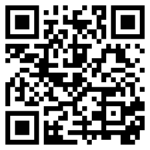Leading the Way in Vascular Excellence.
Upper Extremity Artery Blockage
About
Upper extremity artery blockage occurs when blood vessels supplying the arms are obstructed, often by plaque buildup or blood clots. This can lead to symptoms like arm pain, tingling, and weakened pulses. Without treatment, it can cause tissue damage or even loss of limb function.
Symptoms
Symptoms of upper extremity artery blockage include pain, tingling, and paleness in the arms due to reduced blood flow. You might also notice weaker pulses, cool skin, and tissue damage. In severe cases, muscles can waste away or tissues may die, requiring urgent medical attention.
Treatments
Treatments for upper extremity artery blockage include medications to prevent blood clots and improve blood flow, lifestyle changes like quitting smoking or adopting a healthier diet, and procedures such as angioplasty to widen the blocked artery or bypass surgery to create a new pathway for blood flow.
Studies Performed
Studies performed to diagnose upper extremity artery blockage include Doppler ultrasound, which assesses blood flow and detects narrowing or blockages in the arteries. Angiography, using contrast dye and X-rays, provides detailed images of the arteries, aiding in diagnosis and treatment planning. Magnetic resonance angiography (MRA) and computed tomography angiography (CTA) are non-invasive imaging techniques used to visualize the arteries and identify blockages or abnormalities.
Prevention
Preventing upper extremity artery blockage involves managing risk factors such as smoking, diabetes, and hypertension. Regular exercise, maintaining a healthy weight, and a diet low in saturated fats are essential. Avoiding prolonged immobility and repetitive arm motions also help maintain arterial health and prevent blockages.


